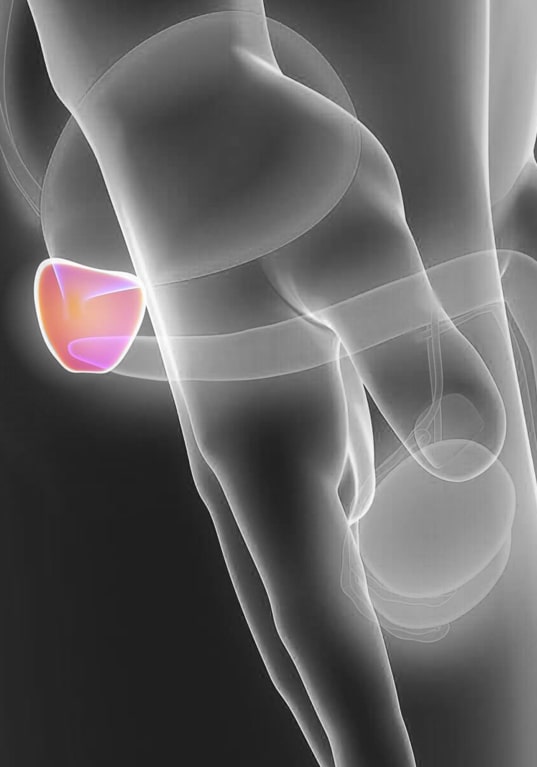Prostate, surgery without injury
There are commonly two ways to treat benign prostatic hyperplasia: the classic abdominal surgery, open, which is done through an incision below the navel called open adenotomy or by endoscopic access, which is done through the urethra or transurethral, i.e. “without wounds”.
Open surgery:
This type of surgery is indicated, mainly in cases with large prostates, the urologist will explain that, under general anesthesia, he will make a transverse or vertical incision in the lower abdomen and that it will be through this surgical wound that the prostate is accessed and the obstructive inner part of the prostate (adenoma) is removed, leaving the capsule or “cortex”.
The prostate could be compared to an orange, since it is a matter of extracting the segments and leaving the skin. In this way, when urine circulates inside the prostate, it passes through it more easily. This surgery usually takes approximately 60 to 90 minutes and requires a hospital stay of 3 to 5 days, keeping the bladder catheter during this stay.
This method involves a greater loss of blood than the other techniques, but in most cases does not require a transfusion.
Prostate Resection:
For many years the most used technique of choice is the transurethral resection of the prostate, this technique is performed under spinal anesthesia, which is very similar to the epidural of childbirth, in this case, the urologist introduces an instrument through the penis, managing to divide the obstructive internal part of the prostate, leaving the capsule intact.
These fragments are then aspirated and sent for analysis.
The procedure takes approximately 1 hour, there is very little blood loss and the patient remains with the probe and hospitalized for 3 to 4 days.
On the other hand, one of the least invasive and most recommended techniques is currently known:

Holmium Laser Enucleation of the Prostate (HoLEP)
This technique is surgically less invasive and more versatile for the treatment of benign prostatic hyperplasia since it is indicated for prostates of any volume and is the most appropriate in large prostates and consists of using the Holmium laser to resect or eliminate the prostatic tissue that produces an obstruction to the outflow of urine.
Usually spinal or general anesthesia is used, although it can also vary and will depend on the anesthesiologist and your individual needs, a prophylactic antibiotic will be used to reduce the risk of infections and sometimes the antibiotic treatment can be prolonged until after surgery, especially in those patients who already had a bladder catheter before surgery.
The instrument used is called a resector, this is introduced through the urethra into the bladder, avoiding abdominal scars, this procedure is known as endoscopic and it is through this resector that a laser fiber is introduced, With this fiber, the enucleation of the prostatic adenoma (prostatic tissue that causes the obstruction of the outflow of urine) is performed by resecting it, enucleating it and moving it towards the bladder.
Finally, once the prostatic adenoma has been resected, an instrument known as a morcellator is introduced, which allows the extraction of the prostatic tissue through the urethra to analyze it.
At the end of the surgery, a bladder catheter is placed with a continuous saline flushing system to prevent clots from developing.
The duration of the procedure will depend on the size of the prostate, but can vary between 60 to 180 minutes.
When using the Holmium laser, the degree of penetration in the underlying tissue is minimal, which allows an adequate control of the procedure, thus substantially reducing the risk of bleeding. Thus, hospitalization time is shorter and can vary between 1-2 days after surgery.
ADVANTAGES OF CHOOSING HOLMIUM LASER ENUCLEATION OF THE PROSTATE (HOLEP)
Shorter stay and
recovery
in the hospital
Less time with a bladder catheter
bladder catheter
after surgery
Lower risk of complications
(especially hemorrhagic).
There is no limit
on prostate
prostate size
Complete removal of the obstruction, removing more tissue than transurethral resection of the prostate (TUR).
CARE AFTER SURGERY EVEN WHILE IN THE HOSPITAL
– Bladder washings with saline will be done through the bladder catheter (placed during surgery) between 12-24 hours.
– After making sure that the urine is clear without the bladder washings, the bladder catheter will be removed.
– Once it is confirmed that urination (urine) is adequate, the patient will be discharged from the hospital.


POSTOPERATIVE CARE AT HOME
– After surgery and to prevent complications at home you will need to
– Drink plenty of fluids, at least 1.5-2 liters of water, unless you have a medical condition that prevents you from drinking plenty of water, such as chronic renal insufficiency.
– Take the medication prescribed by your doctor correctly and on time.
– You may be able to do your daily activities, except for intense physical exercise, cycling or lifting weights over 5 kg (for at least 4-6 weeks).
– You should not take thermal baths or go to saunas.
– You should avoid sexual intercourse for 4 weeks. In addition, you should consider that after HoLEP you may have retrograde ejaculation, a condition in which the semen does not come out through the urethra during orgasm, but instead enters the bladder to be eliminated with the urine.
– Avoid foods that may constipate you



















